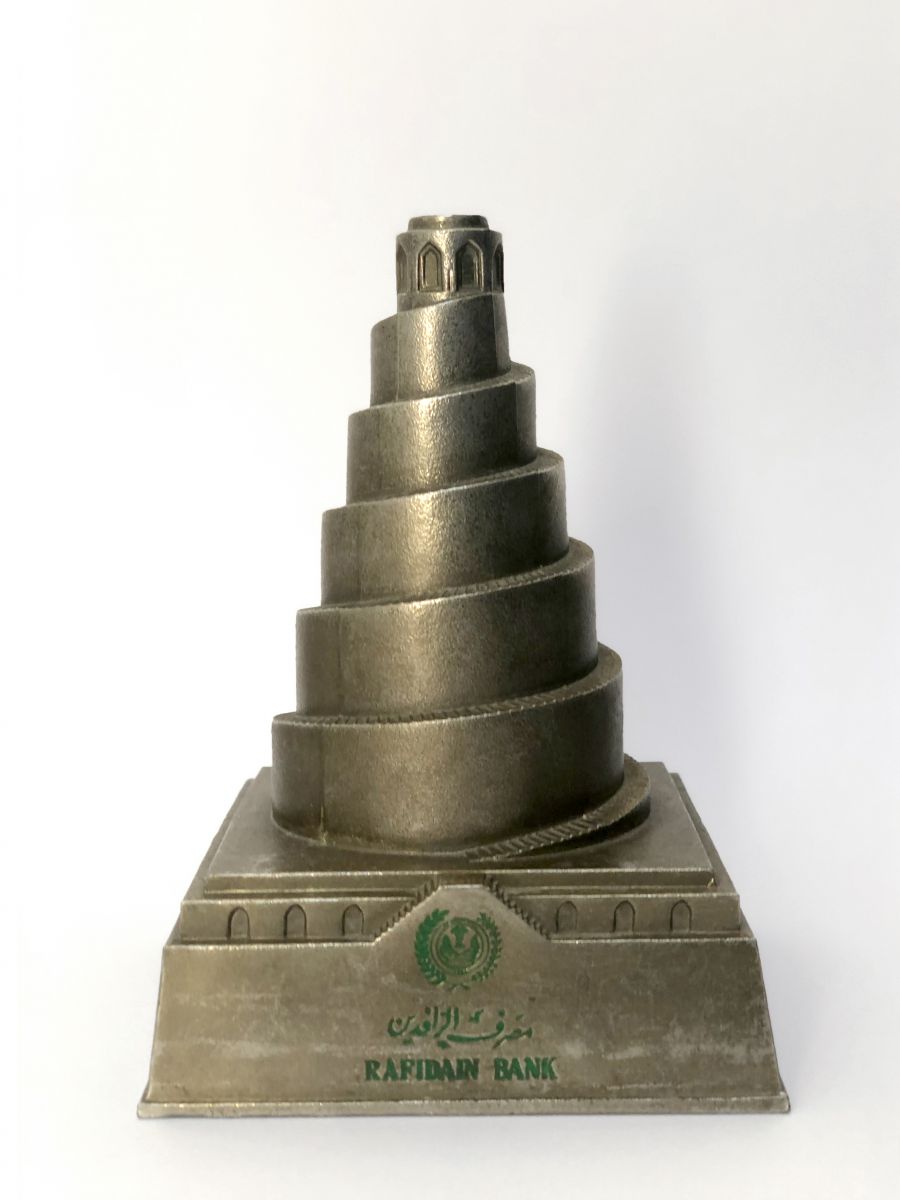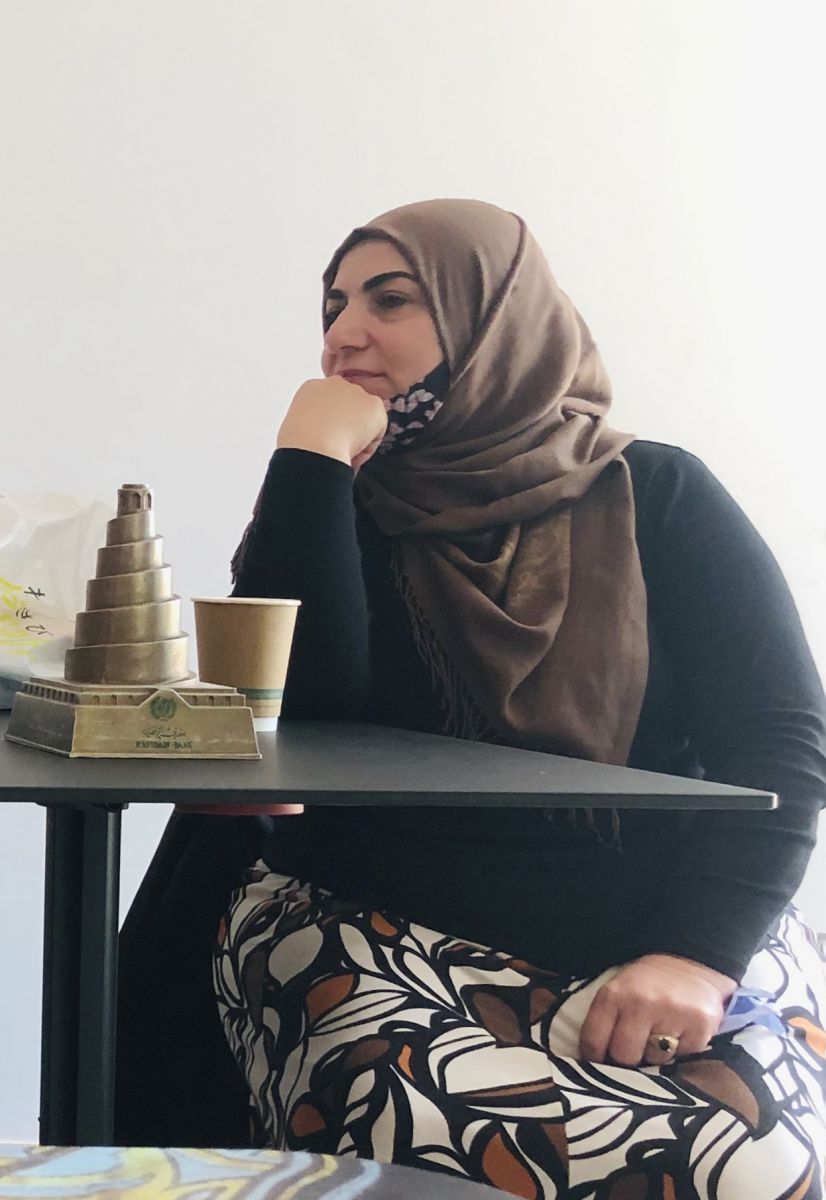"Before I started this project, this object captured a faint memory of a homeland, and of the distant relative who gifted it to me. It was merely a decorative item on my windowsill, but it had sentimental value.
Now that I have allowed myself to think about all aspects of this object, my memories and feelings have started to erupt inside my head like a volcano. It feels as if my memories were bottled up in a soda bottle and now that I have shaken it, they have started to spill everywhere.
My memories might feel sad and depressing, but to me, they are part of me, and they represent the time where I wasn't confused as to which land is my homeland. Living outside of Iraq is like uprooting a tree and planting it in a strange environment. No matter how long I live here, my country and homeland will always be Iraq. Yet, I don't see myself going back and living there, part of me is here now.
My object is a coin box made of heavy brass and shaped like The Twisted Minaret of Samarra (known as Malwiyya). It was made for the Al Rafidain Bank, and it has the name and logo of the bank at the front. I acquired it in 2001.
That year was one of the saddest periods of my life. I had just been divorced after seventeen years of marriage and was left to bring up two young boys on my own. I was in a foreign country with no family to support me. I couldn't confide in my friends or ask them for help. I had to keep my divorce a secret because, twenty years ago, this was a taboo subject especially for an Iraqi woman living in a foreign land without a man to 'protect her'.
I decided to visit my family in Iraq to have the comfort of being amongst my loved ones. While I was there, I went to visit my sister-in-law. I brought her a few gifts from London, so she picked up this object and gave it to me in return. I didn't know then that this visit would be the last time I see my sister-in-law and her family. We were very close and used to call each other sisters, but after that visit, circumstances changed, and I wasn't able to see that family again.
Up until here, that was my memory of the object, however, after joining the 'Memories of Home' workshop, a new memory emerged. It wasn't hidden or forgotten, it was just not linked. I remembered the first and only time I visited the actual historic site of the Malwiyya.
It was the summer of 1977 or 1978. My eldest sister said that her employer was arranging a trip to Samarra to visit the Malwiyya and that the staff can bring their family if they want. My family agreed to go, which was a surprise because they are quite religious, and their ideal day out would be to go visit religious shrines or to visit our relatives’ homes. I had been to Samarra with my family many times, but only to visit the two Imam shrines.
The day started well. It was a hot weekend day, and we boarded the same bus that takes my sister to work every day. We were therefore familiar with the driver, and also with her friends as they sometimes would come over to our house. When we arrived, I was astonished by the scene. There, in the middle of the desert, stood this astonishingly sturdy and huge building. My family members started debating whether or not they wanted to climb the Malwiyya. Most of them were old or unfit, and also thought it was dangerous to climb such a high building, so they rejected the idea. I, however, wanted to so I joined a group of my sister's friends and we started climbing the stairs.
It took us a while to reach the top, by then sun was almost setting and I was able to see really far. All I can remember seeing was my family sitting on a rug, chatting and having a picnic.
After we came down, the group gathered and headed to the bus to make our way back home."
Souad

